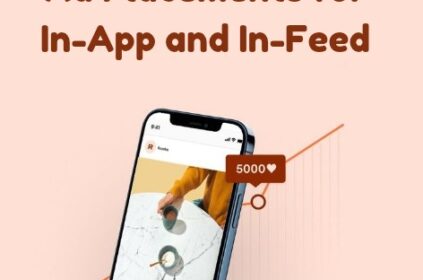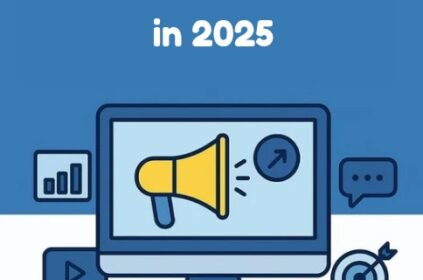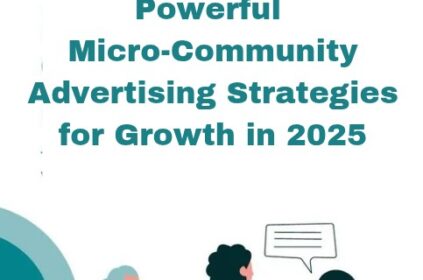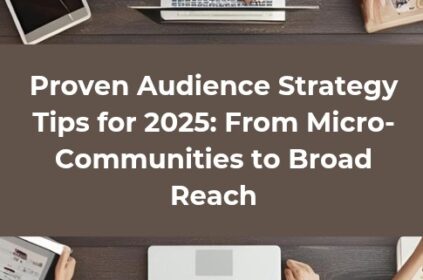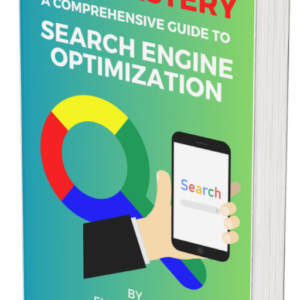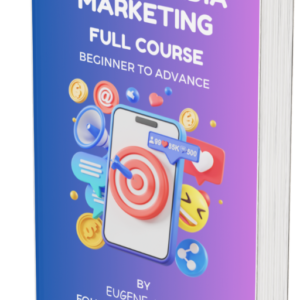Digital advertising has ballooned into a trillion-dollar marketplace, yet every extra dollar now buys less certainty than it did a year ago.
Privacy regulations limit tracking, AI accelerates bidding wars, and audiences swipe past anything that feels remotely intrusive. Against that backdrop, native ads vs display ads in 2025 isn’t just a theoretical debate—it’s a budgeting decision that can make or break quarterly targets.
This guide dissects performance metrics, user psychology, creative strategy, and real-world case studies so you can choose (and combine) the right formats without second-guessing.
The State of Play in 2025
Global ad spend keeps climbing, but incremental conversions cost more. That inflation is partly due to stricter consent policies and partly to ad fatigue.
Marketers who survive the squeeze do two things well: respect user attention and exploit channels built for their goals. Understanding where native ads vs display ads in 2025 fit into that mission is the first step toward efficiency.
It means mapping every dollar to intent signals, trimming formats that burn impressions without moving the buyer journey, and leaning into creative native to each micro-moment.
Privacy-safe attribution models prioritize on-site behavior—scroll depth, engaged-time, add-to-cart events—over vanity metrics like CTR. Budgets shift dynamically: educate through sponsored articles, retarget with banners, close via personalized email drips.
Teams sync media buying with first-party pipelines, routinely shaving 20 % off acquisition cost while boosting lifetime value.
In short, success rests on disciplined experimentation, rapid feedback loops, and courage to kill underperformers early.
What Counts as Native, What Counts as Display?
Native advertising adopts the tone, typography, and editorial cadence of its host environment. Think sponsored news articles, in-feed social posts, or content-recommendation widgets. Each unit is clearly labeled but feels like part of the story flow.
Display advertising, by contrast, lives in fixed dimensions—leaderboards, skyscrapers, rectangles, mastheads—and exists outside the main narrative.
That single structural difference explains why one grabs curiosity while the other shouts offers from the sidelines. Grasp the distinction and you’ve already answered half the “what’s the difference?” question that dogs every planning meeting.
In practical terms, native units resize fluidly across devices and load with the same priority as editorial images, giving them a speed edge. Banners, fixed to predetermined pixels, risk ugly breaks on odd screens or clean blocks by ad-filters.
That gap matters when weighing native ads vs display ads in 2025, because algorithms now reward friction-free impressions with lower bids and better placement.
Where Do Eyes Really Linger?
Eye-tracking studies released this spring found that native placements hold gaze 42 percent longer than equivalent banners on the same page. Longer view time translates into deeper cognitive processing, higher brand recall, and richer remarketing pools.
Neuromarketing labs even report stronger EEG signals in the memory-encoding regions of the brain when users scroll past context-matching articles versus fixed rectangles.
Yet banners still deliver knockout punches when urgency matters—holiday flash sales, ticket drops, or lightning deals thrive on bold contrasts and countdown timers.
Omnichannel campaigns that layer time-sensitive banners atop narrative-driven content routinely beat single-format efforts by double-digit margins.
Framing native ads vs display ads in 2025 as enemies misses the point: they’re complementary tools in the same persuasion toolbox, and the brands winning post-cookie attention wars are those that choreograph both formats into a sequenced, data-driven dance rather than forcing them into a zero-sum cage match.
CTR, VTR, and the Weakness of Surface Metrics
Average click-through rates hover around 0.35 percent for native and 0.06 percent for display. That looks like a landslide until you zoom out. Banner inventory can cost pennies; premium native slots may cost dollars.
Savvy buyers therefore track cost per qualified session, not just CPC. They also fold in view-through rate (VTR) for video, engaged-time benchmarks for scroll-based placements, and assisted-conversion credit across attribution windows.
Once bounce rate, scroll depth, and event-level engagement enter the spreadsheet, native retains a decisive lead, but the margin narrows—crucial context whenever someone waves a dashboard claiming banners are “dead.”
A multi-touch model often reveals that display impressions lift branded-search volume by 6–8 percent, indirectly feeding lower-funnel wins.
The real takeaway for native ads vs display ads in 2025 is simple: optimize for blended ROAS, or risk killing channels that silently grease conversions elsewhere.
Purchase Intent and Down-Funnel Impact
A Nielsen Catalina study of CPG campaigns this year discovered an 18 percent lift in shopping-cart additions among users who first encountered a brand through native content.
Because the format mirrors editorial tone, readers perceive the message as guidance, not interruption. That credibility explains why many strategists position native ads vs display ads in 2025 as a funnel-stage decision: native for discovery and education, banners for final nudges.
Native articles seed problem-solution narratives, build trust with quotes or data visualizations, and capture soft leads via “read more” widgets.
Retargeted banners then deliver scarcity cues—free shipping expiring tonight, seats filling fast, prices rising soon—to convert that warm intent into transactions.
Brands tracking cohort behavior find that customers who touch both formats average 22 percent higher lifetime value than those acquired through a single channel, proving that an integrated path—from story to spotlight—turns casual browsers into committed buyers.
Banner Blindness? Not So Fast
Declare display obsolete and you’ll miss millions of cheap, high-reach impressions—especially on programmatic networks tuned for frequency capping and contextual matching.
When a retailer needs to liquidate inventory in forty-eight hours, no format blasts the message farther or faster than a well-targeted banner burst.
The smarter question isn’t “Are display ads still effective?” but “Which objective suits display best—and for how long?”
Cost Structures, ROAS, and Budget Allocation
Native typically commands higher CPCs but produces longer sessions, richer first-party data, and lower churn. Banners keep CPMs low, especially at prospecting scale, yet suffer heavier landing-page drop-off.
The only fair way to resolve native ads vs display ads in 2025 is to calculate blended customer-acquisition costs by cohort. Brands that switch to that lens often uncover hidden profit pockets on both sides of the ledger.
Audit bid logs weekly, segmenting new versus returning users, and tie lifetime revenue to multi-touch attribution models. Native headlines often lift CAC-to-LTV ratios by eighteen percent despite higher bids.
Display retargeting, meanwhile, exploits off-peak CPM drops to drive cheap incremental checkouts. Run quarterly media-mix regressions before reassigning budget lines. Gut estimates mislead too often.
Viewability, Ad Blocking, and Brand Safety
Roughly 37 percent of desktop users now run ad-blockers; mobile adoption is closing in on 15 percent. Because blocklists target common banner sizes and tag structures, native units frequently slip through unharmed.
They also inherit the contextual halo of their host articles, shielding brands from awkward adjacency near disinformation or polarizing content. Display networks fight back with inclusion lists and AI classification, yet false positives remain.
Risk-averse verticals—finance, pharma, children’s products—therefore lean harder into subtle integrations.
Viewability audits now tilt toward native ads vs display ads in 2025: units load within the content stream, often above the fold, and average 74 percent in-screen time versus 54 percent for banners. Regulators scrutinize disclosure, so crisp labels and GDPR-compliant consent flows are non-negotiable safeguards.
Storytelling vs. Spotlight
A banner is a billboard: concise, urgent, visually punchy. A native slot is a mini-magazine: headline, deck, thumbnail, sometimes an entire article.
That expanded canvas empowers brand journalists to unpack value props, insert testimonials, or embed interactive tools.
Forward-thinking teams splice short-form video into sponsored stories, turning passive scrolls into micro-engagement funnels.
Creativity flourishes when you stop treating native ads vs display ads in 2025 as rivals and start viewing them as stages in the same narrative arc.
Omnichannel Synergy in Practice
Picture a SaaS launch:
#1. Top of Funnel: A thought-leadership native article on TechCrunch positions the product as an industry cure-all.
#2. Middle of Funnel: Retargeting banners surface limited-time discounts to anyone who read 60 percent of the article.
#3. Bottom of Funnel: Email sequences triggered by banner clicks close deals with demos and social proof.
This hand-off strategy treats channels as teammates, not contestants, proving that the smartest answer to native ads vs display ads in 2025 is often “both, but for different reasons.”
Pitfalls to Dodge
#1. Over-segmenting too soon shrinks sample size and drives CPCs sky-high.
#2. Creative fatigue can masquerade as channel fatigue—refresh visuals before cutting budgets.
#3. Tracking gaps lead to phantom conversions or missing revenue. Audit UTMs, pixels, and server-side tagging before launch.
#4. Mismatched narratives between ad and landing page shred trust in seconds.
The difference between a learning campaign and a money-burner often boils down to these avoidable missteps.
Measurement Frameworks That Survive Channel Shifts
Last-click attribution undervalues the discovery power of native and over-credits the final banner in a long journey. Position-based or time-decay models balance the equation, revealing how mid-funnel touchpoints lubricate conversions weeks later.
Tie every creative variation to a clear hypothesis and review cohort data monthly. That rigor turns the recurring debate about native ads vs display ads in 2025 into an engine of continuous optimization rather than a turf war.
Final Checklist Before You Launch
#1. Goal Alignment – Match objectives to formats: education → native; urgency → display.
#2. Creative Consistency – Harmonize fonts, colors, and tone across placements.
#3. Page Continuity – Deliver on-page value promised in-feed.
#4. Speed – Sub-two-second mobile loads or bust.
#5. Compliance – Clear sponsorship labels and privacy disclosures.
#6. Iterative Mind-set – Data beats opinion; ship, measure, iterate.
Apply the list and you’ll step into the arena ready to maximize gains from native ads vs display ads in 2025 without fear of costly surprises.
Conclusion
No universal champion exists. Native excels at early-stage storytelling, fostering credibility and long-term interest. Display dominates rapid-reach scenarios, squeezing action out of tight time frames.
Successful marketers treat the formats as modular—swapping them in or out based on objective, audience mind-set, and creative bandwidth.
Master that orchestration and the perennial question of native ads vs display ads in 2025 transforms from a headache into your biggest competitive edge.


